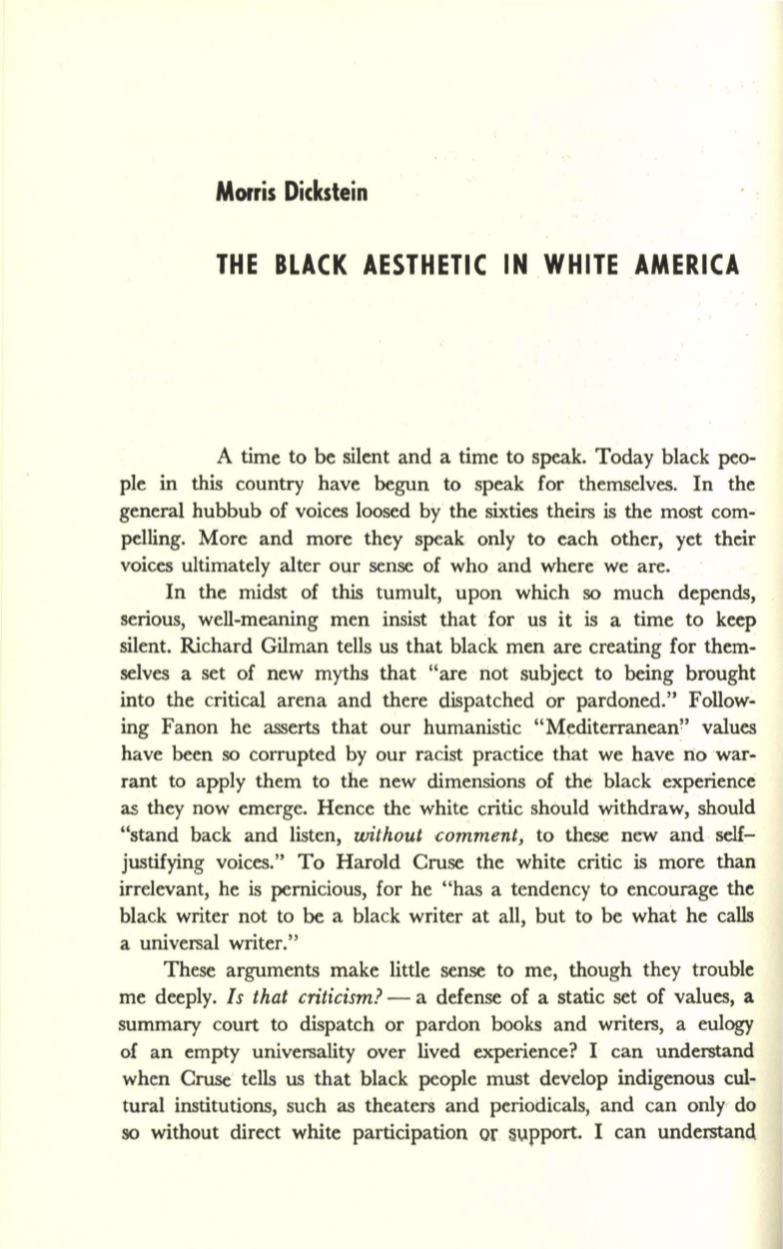
Morris Dickstein
THE BLACK AESTHETIC IN WHITE AMERICA
A time to be silent and a time to speak. Today black peo–
ple in this country have begun to speak for themselves. In the
general hubbub of voices loosed by the sixties theirs is the most com–
pelling. More and more they speak only to each other, yet their
voices ultimately alter our sense of who and where we are.
In the midst of this tumult, upon which so much depends,
serious, well-meaning men insist that for us it is a time to keep
silent. Richard Gilman tells us that black men are creating for them–
selves a set of new myths that "are not subject to being brought
into the critical arena and there dispatched or pardoned." Follow–
ing Fanon he asserts that our humanistic
"M~diterranean!'
values
have been so corrupted by our racist practice that we have no war–
rant to apply them to the new dimensions of the black experience
as they now emerge. Hence the white critic should withdraw, should
"stand back and listen,
without comment,
to these new and ·
self–
justifying voices." To Harold Cruse the white critic is more than
irrelevant, he is pernicious, for he "has a tendency to encourage the
black writer not to be a black writer at all, but to be what he calls
a universal writer."
These arguments make little sense to me, though they trouble
me deeply.
Is that criticism?
-
a defense of a static set of values, a
summary court to dispatch or pardon books and writers, a eulogy
of an empty universality over lived experience? I can understand
when Cruse tells us that black people must develop indigenous cul–
tural institutions, such as theaters and periodicals, and can only do
so without direct white participation
or
S1.lpport. I can understand


